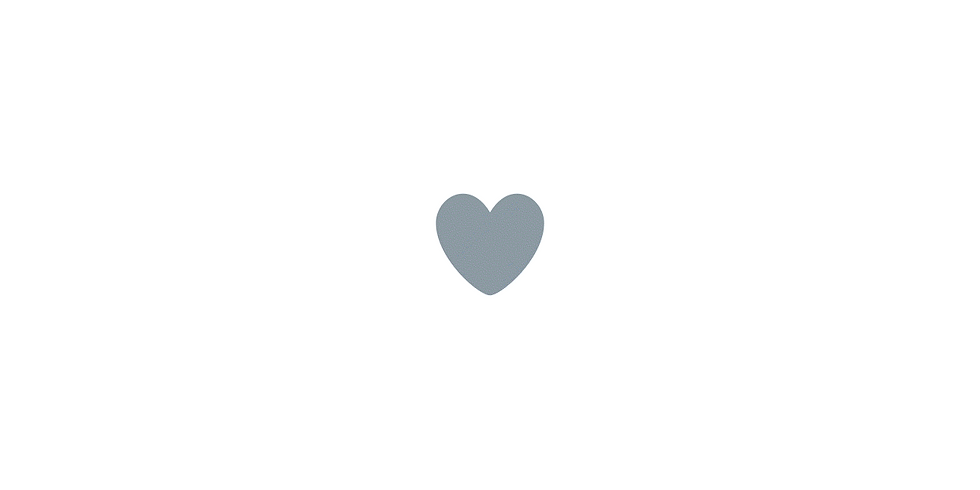Goodbye Twitter Favorites; Twitter Replaces Stars With Hearts
- Fahad H

- Nov 3, 2015
- 3 min read

R.I.P. Twitter favorites. In a seemingly small but symbolically significant move, Twitter announced today that it is replacing favorites with likes and changing the icon from the familiar star to a heart.
Twitter’s motive? To make Twitter easier to understand for new users, a quest that has taken on increasing urgency as the company struggles to entice more people to make regular use of its service.
Favorites have long been one of those quirky Twitter features that inspires essays by power users. Some use them to bookmark tweets with links for reading later, others use them to send various subtle signals to authors of tweets: the hate fave, the LOL fave, the too-hot-to-retweet fave, the conversation-ending fave and so on. Of course, many of the those signals weren’t understood by their intended recipients, which is likely one of the reasons Twitter is making this change.

Product manager Akarshan Kumar explained Twitter’s thinking in a blog post:
We want to make Twitter easier and more rewarding to use, and we know that at times the star could be confusing, especially to newcomers. You might like a lot of things, but not everything can be your favorite. The heart, in contrast, is a universal symbol that resonates across languages, cultures and time zones. The heart is more expressive, enabling you to convey a range of emotions and easily connect with people. And in our tests, we found that people loved it.
Twitter created a GIF to illustrate:

This move is a long time coming for Twitter, which tested replacing favorites with likes as far back as 2012. More recently, it started experimenting with hearts this summer on its mobile apps. Outspoken investor Chris Sacca has been a big supporter of the change, devoting a section of his 8,500-word essay on fixing Twitter in June to argue for adjusting the favorite feature and adding hearts:
“A very high bar is set by using the word ‘Favorite’ on Twitter. Favorite is a superlative. It implies a ranking. In the early days of Twitter many of us interpreted the word literally and only keep a few Tweets in our favorites that were truly, well, our favorites. Today, many of my friends and I use the star as a ‘Like’ button equivalent or even a simple acknowledgement that we saw a Tweet. Whereas other people use favorites as bookmarks. However, the majority of users are baffled by favorites and they don’t end up using the star much, if at all.” “It is high time to introduce “Hearts” to Twitter. For years, folks at Twitter struggled with whether to use a more casual gesture. Suggestions even included buttons that said “Good” or “Thanks.” It is now clear from across the Internet and throughout the world of apps that the heart is universally understood and embraced. (In fact, Periscope’s unlimited heart repetition has elevated the social feedback loop to a mind-blowing new level.) If Twitter integrated a simple heart gesture into each Tweet, engagement across the entire service would explode. More of us would be getting loving feedback on our posts and that would directly encourage more posting and more frequent visits to Twitter.”
Coincidentally, perhaps, Twitter is pulling the trigger on hearts as Facebook, the internet’s leading producer of “Likes,” looks to move beyond that shorthand sentiment. Facebook is running a test that gives people the option of reacting with a series of emoji — “Love,” “Haha,” “Yay,” “Wow,” “Sad” and “Angry — as well as the Like button. Facebook is testing Reactions for users in Ireland and Spain.
Twitter’s move brings consistency to its three major social networks. It’s also adding hearts to its six-second video app Vine (replacing the smiley icon), and live-streaming Periscope has used hearts since its launch last spring.
Twitter said hearts will start appearing today on iOS and Android devices, twitter.com, TweetDeck and Twitter for Windows 10, as well as on embedded tweets on third-party sites. People using Twitter for Mac will see them “soon.”
Correction: An earlier version of this post incorrectly stated that the Vine app used stars to indicate likes. It used a smiley face icon.








Comments